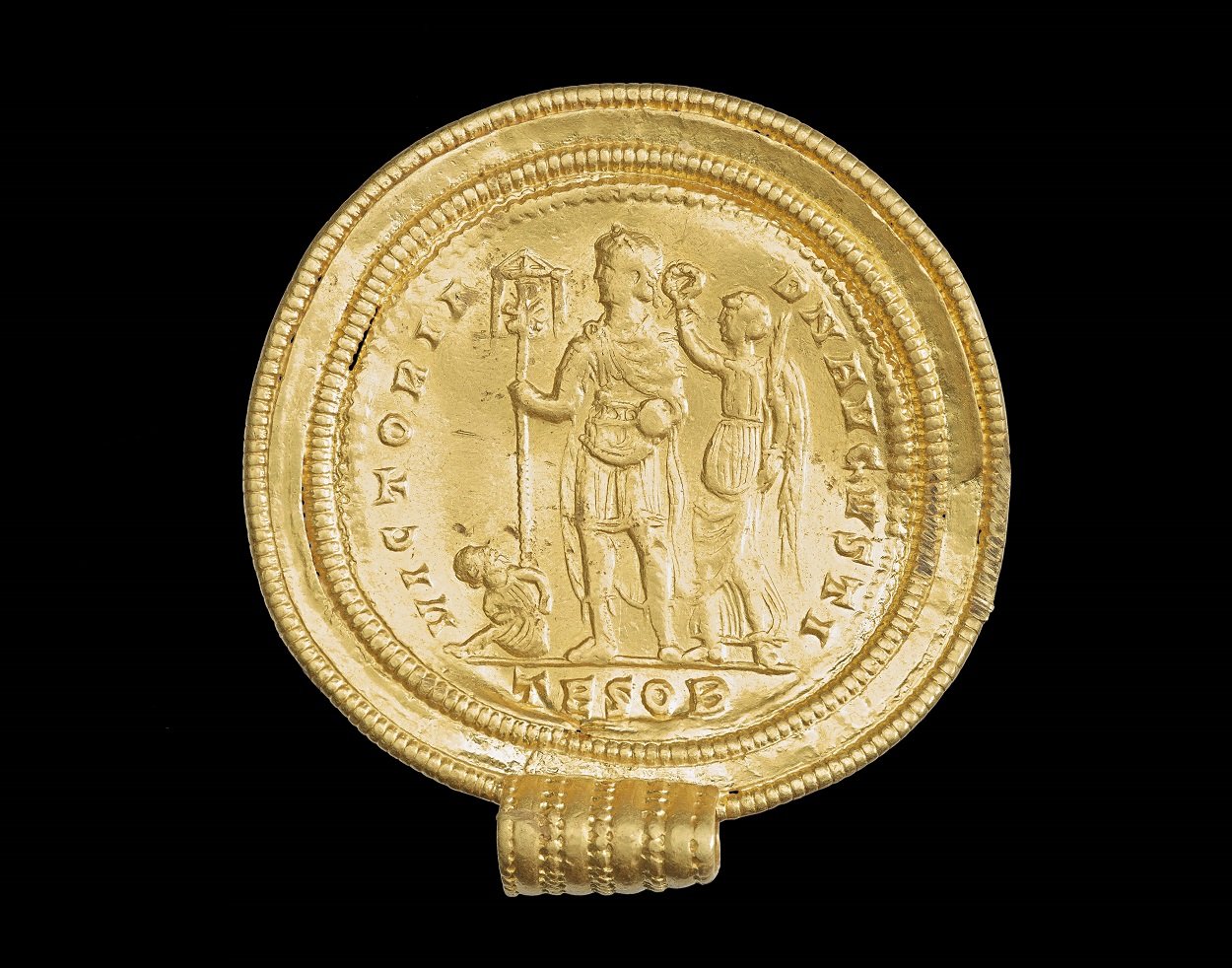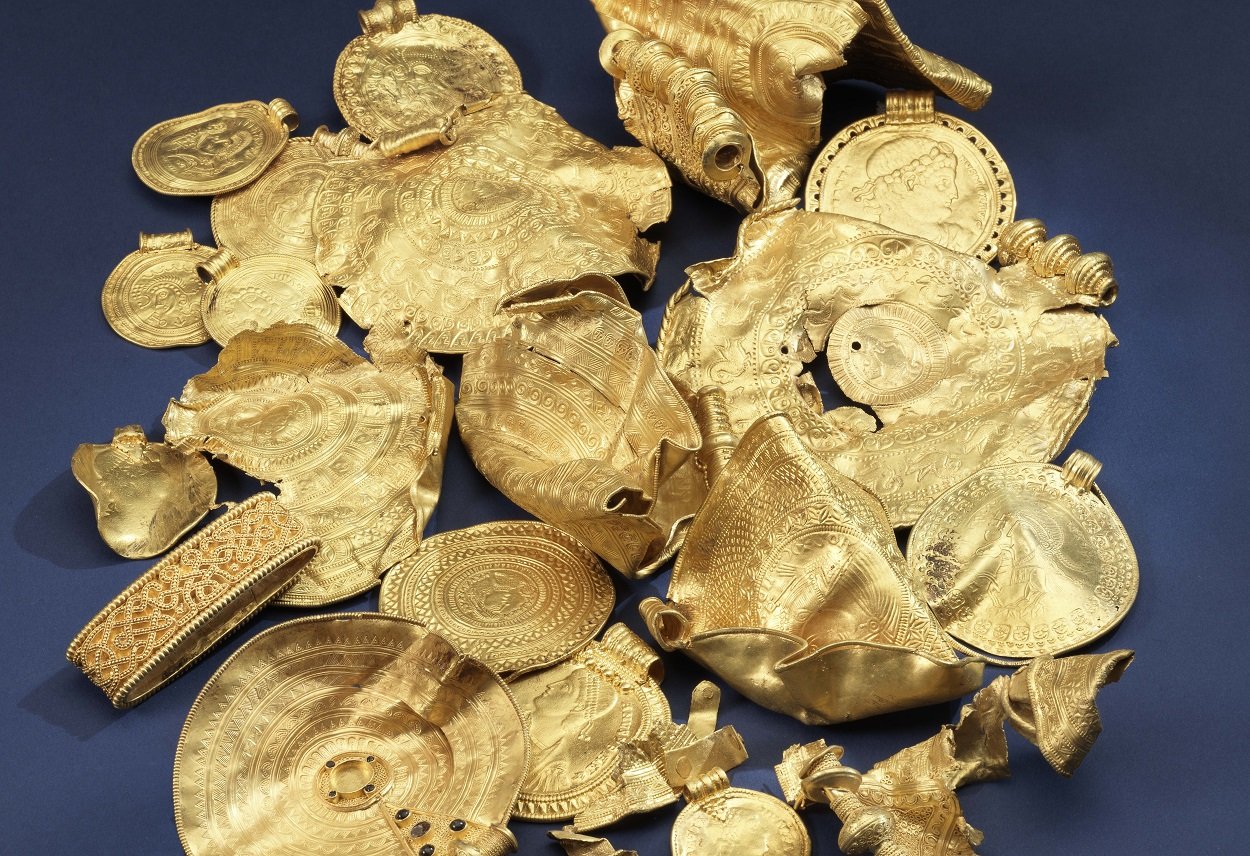A new study, published in the journal Numismatic Chronicle, suggests that the village of Vindelev in Jelling, Denmark, likely had connections to a network of European elite.
In 2020, one of the largest gold hoards ever found in Denmark was discovered at Vindelev by a metal detectorist.
The hoard consists of 23 gold objects dating to the Migration Period during the Germanic Iron Age (a period seen by some researchers as a prelude to the actual Viking Age), which includes: 13 gold bracteates from the 5th century AD, a granulated gold fitting from a sword or knife, and four mounted Roman medallions from the 4th century AD.
Among the bracteates is the largest example ever discovered, and one with a runic inscription that is the earliest known mention of Odin.
As part of the study, researchers examined the four Roman medallions and suggest that they were included as bride-payments or gifts in an elite European network.

Helle Horsnæs, an author of the study, said: “We don’t have any signs that there was supposed to be a power base in Vindelev at this time, so it is surprising for us to find objects that not only show local power, but also European connections. This really puts Vindelev on the European map and places the owner at the highest European level.”
Gold medallions are thought to have been used as gifts from the Imperial House to leading Roman senators and generals, however, finding such items so far from the Roman Empire suggests that an individual(s) living in Vindelev must have been considered very important, both locally and internationally.
The medallions depict four different emperors from the 4th century AD and were likely used as pendants for women. Therefore, it is possible that these items were exchanged several times before being passed down through generations of a family in Vindelev.
Header Image Credit : The National Museum
Sources : Ritzau





